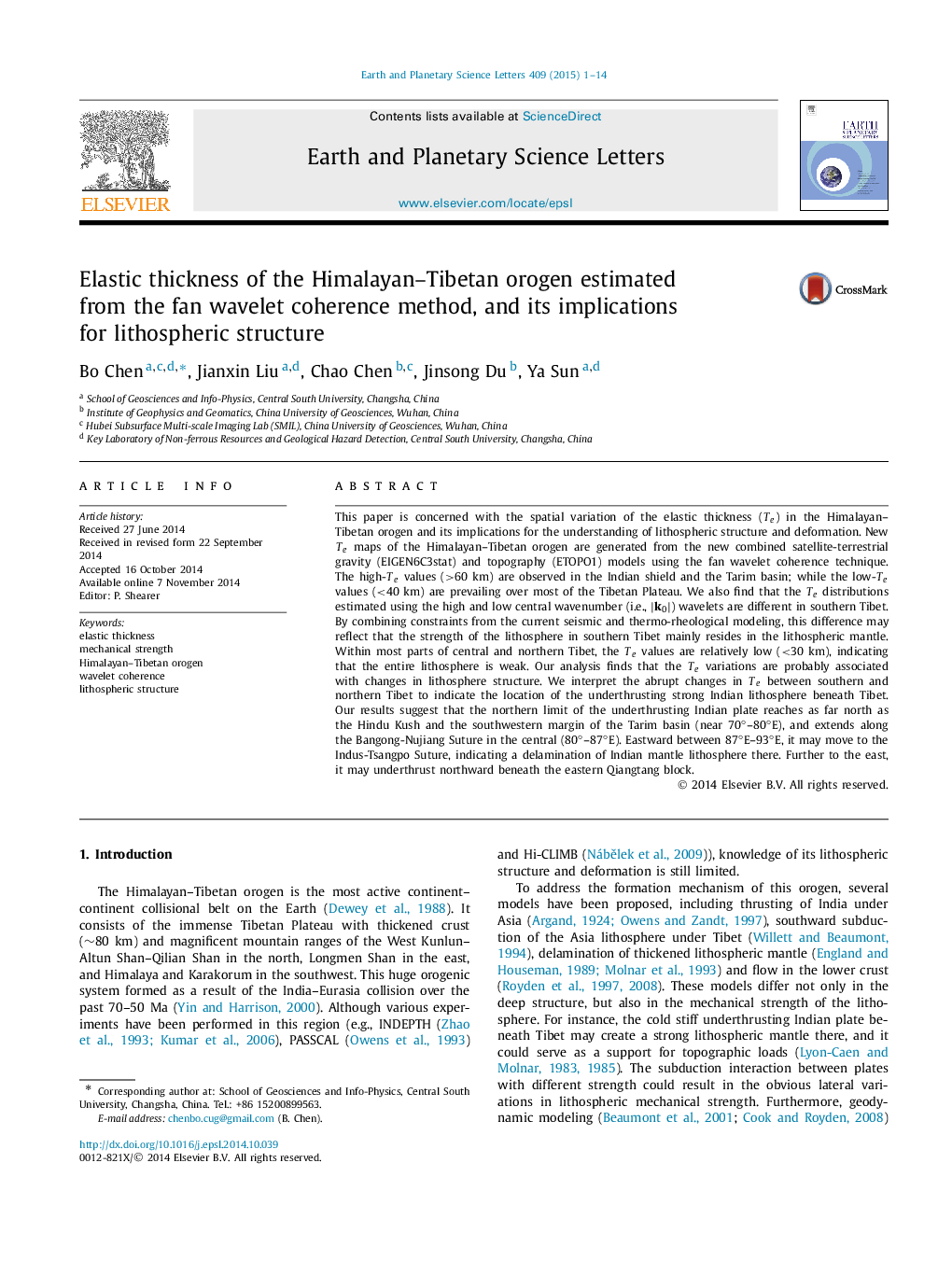| کد مقاله | کد نشریه | سال انتشار | مقاله انگلیسی | نسخه تمام متن |
|---|---|---|---|---|
| 6428806 | 1634747 | 2015 | 14 صفحه PDF | دانلود رایگان |

- The Te values for the Himalayan-Tibetan orogen and surroundings are obtained.
- Estimated Te suggests a weak crust and strong lithospheric mantle in southern Tibet.
- Te results indicate the entire lithosphere of central and northern Tibet is weak.
- Te indicates the north extent of underthrust strong Indian lithosphere beneath Tibet.
This paper is concerned with the spatial variation of the elastic thickness (Te) in the Himalayan-Tibetan orogen and its implications for the understanding of lithospheric structure and deformation. New Te maps of the Himalayan-Tibetan orogen are generated from the new combined satellite-terrestrial gravity (EIGEN6C3stat) and topography (ETOPO1) models using the fan wavelet coherence technique. The high-Te values (>60km) are observed in the Indian shield and the Tarim basin; while the low-Te values (<40km) are prevailing over most of the Tibetan Plateau. We also find that the Te distributions estimated using the high and low central wavenumber (i.e., |k0|) wavelets are different in southern Tibet. By combining constraints from the current seismic and thermo-rheological modeling, this difference may reflect that the strength of the lithosphere in southern Tibet mainly resides in the lithospheric mantle. Within most parts of central and northern Tibet, the Te values are relatively low (<30km), indicating that the entire lithosphere is weak. Our analysis finds that the Te variations are probably associated with changes in lithosphere structure. We interpret the abrupt changes in Te between southern and northern Tibet to indicate the location of the underthrusting strong Indian lithosphere beneath Tibet. Our results suggest that the northern limit of the underthrusting Indian plate reaches as far north as the Hindu Kush and the southwestern margin of the Tarim basin (near 70°-80°E), and extends along the Bangong-Nujiang Suture in the central (80°-87°E). Eastward between 87°E-93°E, it may move to the Indus-Tsangpo Suture, indicating a delamination of Indian mantle lithosphere there. Further to the east, it may underthrust northward beneath the eastern Qiangtang block.
Journal: Earth and Planetary Science Letters - Volume 409, 1 January 2015, Pages 1-14